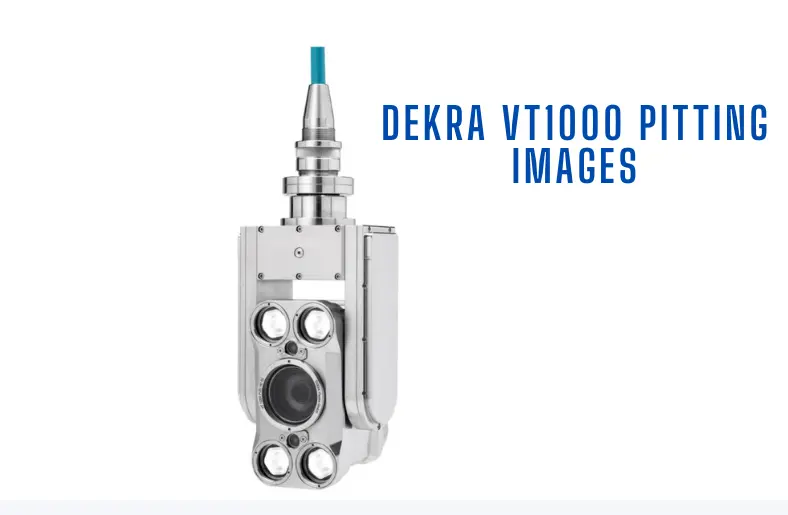The Dekra VT1000 Pitting Images is an innovative tool. It plays a vital role in the inspection process. Its ability to capture pitting images is remarkable. Thus, the accuracy it offers is unmatched. Furthermore, early detection of corrosion is crucial. It can prevent costly damage to equipment. Therefore, regular inspections using this device become necessary.
Moreover, understanding the importance of accurate pitting inspection is key. Without proper tools, corrosion can go unnoticed. Eventually, it leads to larger issues. Thankfully, the Dekra VT1000 simplifies the task. Through this article, you will learn essential tips for using it. You’ll also discover why it stands out.
Understanding Pitting Corrosion
First, pitting is a localized form of corrosion. It creates small, deep holes in metal surfaces. Next, this type of corrosion is dangerous. It’s often hard to detect without proper inspection tools. Therefore, it can weaken structures over time.
Additionally, pitting corrosion usually occurs in environments with chloride. However, even small amounts of moisture can trigger it. Eventually, if left untreated, these pits grow. They can lead to equipment failure. Thus, regular inspection is critical. Now, with advanced technology like the Dekra VT1000, identifying pits becomes easier
Overview of Dekra VT1000
The Dekra VT1000 is a cutting-edge inspection tool designed for detecting and analyzing surface defects like pitting corrosion. First, it offers high-resolution imaging, making it highly effective in identifying even the smallest imperfections. This device is trusted in industries where precise surface inspections are critical. Moreover, its user-friendly interface ensures easy operation, even for those unfamiliar with advanced inspection equipment.
Additionally, the Dekra VT1000 delivers consistent, accurate results across various environments. Now, what truly sets it apart is its reliability and efficiency in producing detailed reports that help professionals make informed decisions. Therefore, it’s an essential tool for ensuring the integrity and safety of equipment, especially in industries prone to corrosion issues.
Why Accurate Pitting Inspection Matters
Accurate pitting inspection is essential for several reasons. First, it helps prevent equipment failure. Over time, pitting corrosion weakens metal surfaces, leading to structural damage. Therefore, early detection saves time and money. Now, proper inspection ensures that maintenance is timely, reducing costly repairs. Additionally, accurate inspection protects safety by identifying risks before they escalate.
Moreover, industries like oil, gas, and manufacturing rely on such precision to maintain operational efficiency. Regular inspections also extend the lifespan of equipment, which is crucial for long-term sustainability. In conclusion, accurate pitting inspections prevent unexpected downtime and improve safety. Thus, they play a critical role in maintaining reliable operations across various sectors.
Best Practices for Using Dekra VT1000 for Pitting Inspection
Using the Dekra VT1000 for pitting inspection requires specific best practices. First, always calibrate the device before each use. Accurate calibration ensures consistent results. Additionally, clean the inspection surface thoroughly to avoid false readings. Next, move the VT1000 steadily to capture clear pitting images. Now, adjust the settings based on the material type being inspected. This improves detection accuracy.
Moreover, review the data immediately to catch any early signs of corrosion. Save all images and reports for future reference, ensuring thorough documentation. Always conduct regular training for operators to maintain high inspection standards. In conclusion, by following these best practices, you can ensure the VT1000 delivers reliable and precise inspection results every time.
Analyzing and Interpreting Dekra VT1000 Pitting Images
Analyzing and interpreting Dekra VT1000 pitting images requires careful attention to detail. First, observe the size and depth of each pit. Now, compare these measurements against standard corrosion levels. Next, look for patterns indicating severe damage or irregular corrosion spread. After that, assess whether the pits are isolated or clustered.
Then, identify any underlying factors, such as material composition or exposure to harsh environments. Additionally, verify the clarity of each image to ensure no anomalies skew results. Finally, use the data to predict potential risks and schedule maintenance. In conclusion, interpreting these images accurately helps prevent future damage and ensures proper system care.
Enhancing Inspection Accuracy: Pro Tips
Enhancing inspection accuracy requires attention to several key practices. First, always calibrate your equipment before use. Then, ensure proper lighting for clear image capture. Next, clean the surface to remove any debris or residue. After that, adjust the camera settings to match the inspection environment. Additionally, double-check angles to cover all possible areas. Now, review captured images for any potential distortions. Finally, cross-check results with previous inspections to spot developing issues.
Also Read: Fall Photoshoot
Conclusion
In conclusion, effective pitting inspection is crucial for accurate maintenance. Firstly, understanding pitting corrosion helps in identifying potential problems early. Next, using the Dekra VT1000 ensures precise image capturing and reliable data. Additionally, applying best practices enhances overall inspection quality. Furthermore, analyzing and interpreting images correctly is key to accurate assessments. Also, employing pro tips improves the reliability of results. Ultimately, thorough inspection practices safeguard equipment longevity and performance. Therefore, integrating these strategies will lead to better maintenance outcomes.




